
Team Strength Tools
Mastering the Rockefeller Habits Book Review
Learn the habits that highly successful, fast growing companies embed in their business.
By: Verne Harnish
What tools do you uses to run and grow your business?
Periodically, I share a favorite book review from Readitfor.me. There is never enough time to read all the latest books – this tool is a great way to learn and to stay on top of the latest topics and new ideas.
Mastering The Rockefeller Habits by Verne Harnish provides a how to on mastering a one-page strategic plan. Read this review to see if this a tool you can use to run and grow your business.
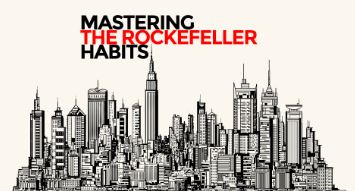
Readitfor.me Book Review:
Verne Harnish is the founder and CEO of Gazelles, a global executive education and coaching company with over 210 partners on six continents.
He’s been at it for three decades, and his book Mastering The Rockefeller Habits has been used by thousands of companies world-wide to learn and apply the tools they need in order to profitably run a fast-growing company.
This book is heavy on “how-to”, which means we have a lot of ground to cover.
Let’s get started.
The Three Decisions and Three Habits
Over many years of working with successful entrepreneurs, and studying the life of John D. Rockefeller, Harnish boiled down their success into three simple habits and decisions.
The first habit is priorities. These are a handful of rules – some of which change, and some of which don’t (like your BHAG, for instance). You should have some for the company as a whole, and for each individual who works there.
The second habit is data. This is ensuring that the organization has sufficient data on a daily and weekly basis to provide insight into how the organization is running, and for what the market is demanding. Ensuring that everybody has at least one key daily or weekly metric driving their performance.
The third and final habit is rhythm – which are the daily, weekly, monthly, quarterly, and annual meetings to make sure that everybody is aligned with the short and long term goals with the business.
The decisions you need to make boil down into the following three questions:
Do we have the Right People? Are we doing the Right Things? Are we doing those Things Right?
Priorities: Mastering a One-Page Strategic Plan
As your company grows, it gets harder and harder to keep your team on the same page. The best way to do this, Harnish tells us, is to boil all of the most important things your company is focussing on into one page.
To follow along, you can download a copy of the plan here: https://gazelles.com/static/resources/tools/en/OPSP.pdf
It should cover the following items, most of which will be covered in more detail in the following sections.
Opportunities and Threats – list the five biggest opportunities and threats facing your organization over the time frame you are considering.
Core Values – these are the five to eight statements that define the “shoulds” and “shouldn’ts” that inform all decisions made at your company.
Purpose – this is the reason your company is in business. Why you do what you do. As an example, Wal-Mart’s purpose is “To give ordinary folks the chance to buy the same things as rich people.”
Actions and BHAG – this is your 10 – 25 year lofty goal, similar to Kennedy’s legendary goal to put a man on the moon.
Targets and Sandbox – the target is where you want your company to be in 3 to 5 years. The Sandbox is basically your market – where you’ll play, the product/service you’ll provide, and your expected market share in 3 to 5 years.
Brand Promise – this is the key need you satisfy for your customers. It should be measurable.
Key Thrusts/Capabilities – these are the 5 or 6 things you need in order to reach 3 to 5 year targets.
Goals and Key Initiatives – this is what your company needs to achieve this year, and the 5 or 6 key initiatives that will help you get there.
Critical Numbers – this is where you should have one or two numbers – ideally one from the balance sheet and one from the income statement. It should represent a key weakness in your economic model or operations, that if addressed, will have a significant impact on the business.
Actions and Rocks – these are your quarterly action steps.
Theme, Scoreboard Design and Celebration – create a quarterly or annual theme to bring focus to the year, and post your scoreboard where everybody can track your progress on the plan.
Schedules – determine when things need to happen. Unless activities show up on somebody’s weekly todo list, nothing gets done.
Accountability – this is where you identify which person is accountable for which particular activity on your plan.
Now that we’ve figured out what we need to be focussed on, let’s take a deeper dive into the most important areas of this plan.
Priorities: Mastering the Use of Core Values
Having a few rules, repeating them until everybody is sick of hearing you repeat them, and then making sure everybody acts in accordance with them, is how you create a strong culture.
It makes leading people much easier, and generally leads to better performance, higher employee retention, and better alignment across the company.
Once you have those core values, you should translate them into the quarterly Individual Performance Plan of each person on your team. For each core value that you have, each employee (and you) should be able to identify actions you’ll take to live it out.
Other things you can do include creating recognition awards for people who live out your core values, communicate examples of people living them out regularly, and make them a large part of your quarterly and year themes for the company.
Priorities: Mastering Organisational Alignment and Focus
Having too many priorities is the same as having no priorities.
In order to get your organization aligned with your long term goals, you need to identify the top 5 priorities in your company, and also clearly identify which of the 5 is the most important.
There are seven common leading priorities in fast-growing companies:
- Not big enough to compete in the market;
- Lacking a key player in a key role;
- Your economic engine is broken;
- Somebody else is controlling your destiny;
- You need a war chest to compete;
- You can’t raise money until you grow;
- You need to scale back or you won’t survive.
Once you’ve identified your top priorities, you should put them into your Management Accountability Plan. This will ensure that each priority is assigned to somebody, that you identify the actions that need to be taken, and when they need to be taken.
Priorities: Mastering the Quarterly Theme
Now we start to focus on the nitty gritty of getting the plans into motion. You’ve probably been in a work environment where goals and priorities are set, and then promptly forgotten.
One of the antidotes to this is to make sure your team has an emotional connection to the goals so that you generate commitment to them.
There are many ways to do this.
You could do it in a big and flashy way like Mark Moses of Platinum Capital, who once rode an elephant into a company meeting because they were launching an expansion campaign and he wanted his employees to “think big.”
Or you could do it in a more conservative way like one CEO who handed out watches to his executive team that had their three Critical Numbers engraved on them. Every time his executives looked at the time, they were reminded of the priorities and that “time was ticking.”
You can also create rewards for your employees to help further motivate them to reach the most important goals. As long as the goals are clear, and they can see progress being made towards the goals, these types of group incentives work well.
Data: Mastering employee feedback
Hassles that continue to come over and over again cost your employees a lot of time. This is the kind of work that makes people hate their jobs. It’s also likely that these issues cost you a lot of customers and revenues.
The answer is to create a system of employee feedback to figure out exactly what these problems are, and a systematic process to deal with them.
To get started, ask your team a three-part question: what should we start doing, what should we stop doing, and what should we continue doing? Ask them to think about these questions from both their perspective and from the perspective of your customers.
Then, ensure that you are responsive to the feedback. Find some quick wins and cross them off the list. Make sure that your team sees progress being made on them so that they continue to provide input. It’s not enough to just make progress, they have to be able to see it.
Here are 6 guidelines to keep in mind as you continue to work through your employee feedback.
- Relevancy – is this an important issue for us to tackle?
- Be Specific – make sure to capture the details of each issue.
- Address the Root – look at the root issue, not just the symptoms.
- Focus on the What, Not the Who – focus on eliminating process issues. 95% of the time it’s a process problem.
- Involve All Those Affected – get everybody into one room to discuss and resolve the issue.
- Never Backstab – never talk poorly of somebody that isn’t present.
Follow those rules for gathering and dealing with employee feedback and you’ll be well on your way to eliminating your thorniest recurring problems.
Rhythm: Mastering the Daily and Weekly Executive Meeting
At the heart of Harnish’s system for growth are tightly run daily, weekly, monthly quarterly and annual huddles and meetings. He suggests that these meetings should all have specific agendas, and should happen without fail.
Here are the meetings he suggests you should have:
The Daily Meeting
In a growing company, everybody should participate in a 5-15 minute huddle, daily. These huddles utilize three of the most powerful tools you have as a leader in getting team performance – peer pressure, collective intelligence, and clear communication.
You should hold the meeting at the same time every day, and hold it standing up which helps to keep the meeting short and to the point.
Your agenda should include three things – what’s up, daily measurements (data), and where are you stuck?
The Weekly Meeting
The weekly meeting has a different purpose and agenda. You should be focussing on strategic issues, and it should last approximately an hour for executives.
The first 5 minutes should focus on good news stories from everybody.
The next 10 minutes should focus on the critical numbers in your business.
The next 10 minutes should be customer and employee feedback. Focus on the issues that continue to pop up.
The last 30 minutes should be a focus on a single big issue. It should be one of your large priorities for the month or quarter.
Finally, close with “one-phrase closes”: ask each attendee to sum up with a word or phrase of reaction.
The Monthly Meeting
The focus of the monthly meeting is learning. It’s a 2 to 4 hour meeting for the management to review progress on priorities, review the monthly P&L in detail, to discuss what’s working or not from a process standpoint, and finally to do some training.
The Quarterly and Annual Meetings
Finally, the purpose of the quarterly and annual meetings is to review the progress made on the One-Page Strategic Plan.
The X Factor: Mastering the Brand Promise
The brand promise is the key factor that sets you apart from your competition. It’s the reason that your customers keep returning to you year after year.
This is the starting point for every other executive decision. Make the right call and execute on it, and you’ll win. Choose the wrong one and you won’t.
The key here is to focus on customer needs. Not their wants, but their needs. And you need to fulfill their needs in a way that is different than the competition.
After you’ve chosen that brand promise, you need to make sure that you do everything in your power to execute on it, and ensure that you can remove any bottlenecks or chokepoints that might get in your way.
It goes without saying that doing all of this is incredibly hard. It should cause you to sweat a little just by thinking about it.
Lastly, realize that everything changes with time, including your brand promise. If the market changes, or your customers needs shift, you need to be ready to respond with a new brand promise that fills that void.
Conclusion
There is a lot to take in with the Rockefeller Habits. Most of the information you’ll have heard before, somewhere. But putting it all together and executing on ALL of it is where the magic is.
Get started building your One-Page Strategic Plan, and you’ll be well on your way to building a scalable, profitable business.
Tim Kinane
Call 772-210-4499 to set up a time to talk about tools and strategies that will lead to better results.
Please share this with a friend/colleague
The Upside of Stress Book Review
The Upside of Stress
By: Kelly McGonigal
Periodically, I share a favorite book review from Readitfor.me.
There is never enough time to read all the latest books – this tool is a great way to learn and to stay on top of the latest topics and new ideas.
The Readitfor.me tool has grown into a great resource for both personal and team growth, offering book summaries, micro courses and master classes. Check out this link: Readitfor.me. See how these tools can help build you personal and Team Strength.
Here is a summary of the Book
The Upside of Stress
by Kelly McGonigal
Book Review by Readitfor.me
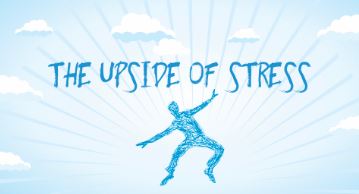
As it turns out, whether or not stress is harmful has a lot to do with how you view it.
Read on to learn how to change your mindset about stress.
Stress is bad for you, right?
As Kelly McGonigal tells us in this fascinating book, the research that scientists have done on stress tell a slightly different story.
As it turns out, whether or not stress is harmful has a lot to do with how you view it.
Consider the following research findings comparing people who view stress as harmful to people who view stress an enhancing.
People who believe stress is enhancing are less depressed and more satisfied with their lives than people who view stress as harmful. They have more energy and less health issues. They are more productive at work and are happier doing it. They also have a greater confidence in their ability to cope with challenges, and even find meaning in difficult circumstances.
That’s a pretty long list of benefits just for changing your mind about what stress means to you.
Join us for the next 12 minutes as we explore what stress actually is, and how you can completely change your relationship with it.
You might even learn how to harness the stress in your life to create a more meaningful, fulfilling life.
Let’s get started.
What is stress?
We first need to start with an understanding of what stress actually is. When you are feeling stress, your body releases cortisol and adrenaline.
From an evolutionary perspective, this stress response is designed to help you. But – like stress in general – it is more feared than appreciated. We’ve come to associate stress as toxic a state which we should try to minimize as much as possible.
But, as we’ll describe as we work our way through this book, your stress response is a resource to rely on rather than an enemy to eliminate.
How stress got a bad name
We won’t spend much time on this section. Basically, a scientist by the name of Hans Selye did a lot of stress research in the 1930s and 40s that showed that stress caused negative physical reactions.
He became known as the Grandfather of Stress, and was nominated for the Nobel Prize ten times, and devoted his life to spreading the word about his research, leading us all to believe that stress is toxic.
The problem is that all of his research was performed on rats, and in situations that bear little resemblance to everyday human stress.
This is what a typical day looked like for one of Selye’s lab rats. You’d start off with unpredictable, uncontrollable shocks. Then you’d get thrown in a bucket of water and forced to swim until you started to drown. Then, finally, you’d get put into an overcrowded cage with other rats where you would fight over an inadequate supply of food.
That, McGonigal rightly points out, isn’t stress – that’s the Hunger Games for rodents.
Nonetheless, Selye made the leap from rats to humans, and from torture to every day stress, and voila – we all developed a negative view about stress.
So now you have a negative mindset about stress
In recent surveys, the American Psychological Association has found that most people in America perceive their personal levels of stress as unhealthy.
These people believe that experiencing stress:
- depletes their health and vitality
- debilitates their performance and productivity
- inhibits their learning and growth
- is negative and should be avoided.
People who have this mindset about stress are much more likely to say that they cope with stress by trying to avoid it. They are more likely to:
- Try to distract themselves from the cause of the stress instead of dealing with it.
- Focus on getting rid of their feelings of stress instead of taking steps to address its source.
- Turn to alcohol or other substances or addiction to escape the stress.
- Withdraw their energy and attention from whatever relationship, role or goal is causing the stress.
Obviously, this reinforces the belief that stress is bad and should be avoided at all costs.
But as we turn our attention towards the benefits of embracing stress, we’ll find a much different story emerges.
Changing from a negative mindset to a positive one
As it turns out, you have a choice about how you respond to stress. Victor Frankl described this as the space between stimulus and response.
A minority of people in the general population believe that stress enhances their lives. These people believe that experiencing stress:
- enhances their performance and productivity
- improves their health and vitality
- facilitates their learning and growth
- is positive and should be utilized.
Where people with a negative mindset towards stress try to cope with stress, people with a positive mindset towards stress try to use it to their advantage. They are much more likely to:
- Accept the fact that the stressful event has occurred and is real.
- Plan a strategy for dealing with the source of stress.
- Seek information, help, or advice.
- Take steps to overcome, remove, or change the source of stress.
- Try to make the best of the situation by viewing it in a more positive way or by using it as an opportunity to grow.
So, just by creating a positive mindset about stress, you can turn self-doubt into confidence, fear into courage, and isolation into connection.
All without getting rid of the stress.
Which begs the question, how do you change your mind about stress?
The insight from the research is that you get what you expect. If you expect stress to be a negative experience, that’s exactly what you will get. If you expect it to be a positive experience, that’s exactly what you’ll get.
There is evidence for this in a lot of different areas of your life. For instance, how you think about getting older has some serious consequences for you later in life. People who have a positive view of aging add an average of 8 years to their life, and have an 80% lower risk of a heart attack.
Your mindset not only helps you in the moment, but also influences you to make better decisions in the future, leading to better outcomes. It’s as though mindset matters twice.
Now let’s turn our attention to the three different ways that your new positive mindset about stress will help you lead a more productive and fulfilling life.
Stress helps you engage
In this section we’ll focus on how you can transform a threat into a challenge.
Our common reaction to stress is to avoid it, and the most common advice you get when do deal with stress in the moment is to “calm down.” Basically, you should find a way to get rid of the stress.
However, viewing the stress response as a resource can transform the physiology of fear into the biology of courage. The stress response does a number of things that will help you perform well under pressure.
It focuses your attention, heightens your senses, increases your motivation, and mobilizes energy. This is true even when the stress doesn’t feel helpful, which is the case when people experience anxiety.
When you start to feel your heart pounding or your breath quickening, remember that this is your body’s way of trying to give you more energy. When you start to feel tension in your body, remember that the stress response gives you access to your strength. Are your palms sweaty? Good, that means you are close to something that you want. Do you have butterflies in your stomach? Embrace them – it’s your guts way of saying that this is something that matters.
If you take the traditional advice and try to calm down, you are preventing yourself from accessing the energy, strength and drive that the stress gives you. So, instead of trying to take a deep breathe to try and calm down, take a deep breath and sense the energy that’s available to you.
Then, use it. Ask yourself what action you can take that is consistent with your goal in this moment.
Connect: How tending and befriending transforms stress
In this section we’ll focus on how you can activate your “tend-and-befriend” response to better deal with stress.
From an evolutionary perspective, we have this “tend-and-befriend” response to make sure we protect our offspring. Rather than get paralyzed with fear (and let our offspring get eaten by that lion), we spring into action.
It does so because it increases activity in three systems in your brain.
First, it activates the social caregiving system, which is regulated by oxytocin. When this happens you feel more empathy, connection and trust.
Second, it activates the reward system, which releases the neurotransmitter dopamine. When this happens you feel more optimistic about your ability to do something meaningful, and it primes your brain for physical action, ensuring that you don’t freeze under pressure.
And third, it activates the attunement system, which releases to neurotransmitter serotonin. When this happens, your perception, intuition and self-control are all enhanced to ensure that the actions you take have the biggest positive impact.
In other words, as McGonigal points out, the tend-and-befriend response makes you social, brave and smart. Which is a much better response than trying to avoid dealing with whatever is causing you stress.
So, when you are feeling overwhelmed, look for opportunities to do something for somebody else that goes beyond your regular responsibilities.
Fair warning – your brain is going to tell you that you don’t have the time or energy to do it. But that’s exactly why you should. The good news is that small gestures work just as well as grand gestures to activate this response, so just get into action rather than waiting for the perfect moment to do something big.
Grow: how adversity makes you stronger
In this last section we’ll focus on how stress can actually help you learn and grow.
As McGonigal points out, the idea that we grow through adversity is not new. It’s embodied in the teachings of every major religion.
The science shows that plenty good can come from stressful or traumatic experiences. Here is a partial list of some of the positive changes that are commonly reported in cases of hardship, loss or trauma:
- A sense of personal strength;
- Increased appreciation for life;
- Spiritual growth;
- Enhanced social connections and relationships with others;
- Identifying new possibilities and life directions.
The important part, McGonigal explains, is that the good that comes from difficult experiences isn’t from the event itself – it comes from you.
What it requires is for you to look back on the difficult experiences from your past, and to reflect on the positive changes that came from them. Then, when you are faced with future stressful situations, you’ll be able to recall how you were able to overcome them in the past to help you overcome them in the moment.
This creates a growth-mindset towards adversity.
Conclusion
Ultimately, if you are trying to do big things in your life (the fact that you are reading this would suggest that’s the case), you are going to face adversity. Lots of it.
How you choose to deal with it is up to you. One path leads to growth and the fulfillment of your goals, and the other leads you despair and inaction.
And when you look at it that way, there really is only one choice.
If you are like my clients, you work hard learning how to grow your company or organization. You invest the time and money to improve your team for better results and increased value. The Readitfor.me tool has grown into a great resource for both personal and team growth, offering book summaries, micro courses and master classes. Check out this link for details Readitfor.me and see how this tool can you build your company for long term success.
Call 772-210-4499 or email to set up a time to talk about tools and strategies to lead to better results.
Please share this with a friend/colleague
Cultivating Mid Career Leaders
Michael Malone’s op-ed in the Wall Street Journal, highlights an avenue for sustained team success.
The hiring process is critical to building a successful strong team.
Our Team Strength tools help companies maintain the focus on developing the most successful teams. When there is a need for an infusion of talent we use a Team approach in the selection process for those new employees.
By enlisting the help of existing team members, we efficiently identify qualified candidates while also determining their values and fit to the culture of the organization. As a result, in 60% of our engagements our clients have identified and hired two candidates for each available position.
The continued strength of a team depends on communication and leadership.
Here’s some highlights from the article that you may find useful to building your Team Strength.
ILLUSTRATION: ISTOCK/GETTY IMAGES
The Secret to Midcareer Success
By
Michael S. Malone
Feb. 11, 2018 2:38 p.m. ET
Star employees can rise only so far unless they develop social, or ‘secondary,’ skills.
Why are some top professionals able to maintain peak performance throughout long careers, while others who may be even more talented quickly fade and fall behind? And why do some lesser performers suddenly take off in midcareer and accomplish astonishing things? Two successful tech leaders offer remarkably similar answers to these questions.
Anil Singhal was born in India but emigrated to the U.S. before co-founding NetScout Systems in 1984. Based in Massachusetts, NetScout helps companies and government agencies manage their information-technology networks. A key part of Mr. Singhal’s management strategy has involved helping top young employees make the transition to midcareer success. In particular, he believes that employees’ “primary skills” can take them only so far.
“Those talents by which you earned your college degrees and first made your professional reputation,” writes Mr. Singhal in his upcoming book, can drive success for the first 10 years of a career. After that, “secondary skills”—social qualities like the ability to interact well with colleagues—become the key to continued success.
Mr. Singhal believes that most employers mistakenly nurture primary skills at the expense of secondary ones. This is especially true for employees who are highly productive right off the bat. Unless they move into management or mentorship roles, these increasingly expensive employees can become a drag on employers as their productivity naturally falls off.
That’s where leadership comes in. Facing a career plateau is hard, especially for star employees. But developing the ability to lead creates an avenue for sustained success.
Link to article:The Secret to Midcareer Success
Are you building Team Strength?
We Leverage the insights of the DISC profile with a web-based tool to conveniently identify and address the specific obstacles to teamwork and better results.
- Strategize difficult conversations.
- Coach employees to effectively communicate with each other.
- Maximize your team dynamics.
Get started now on your Team Strength- call 772-210-4499 or email for more information or to set up and an account.
Do you achieve the goals you set? Does your team?
Each month I share a favorite book review from Readitfor.me.
There is never enough time to read all the latest books – this tool is a great way to learn and to stay on top of the latest topics and new ideas.
If you are like my clients, you work hard learning how to grow your company or organization. You invest the time and money to improve your team for better results and increased value.
Do we really know what our goals are and are they set properly?
Read on.
Succeed
by Heidi Grant Halvorson
I’m sure like me you’ve probably set many goals, in business and in personal life and, unfortunately not quite achieved them. Well, in her book, “Succeed: How We Can Reach our Goals”, Dr Heidi Grant Halvorson tells us anyone can be more successful in reaching their goals. Based on the findings of several years of research into goal setting she clears the mist and shows us paths we can take to finally reach these goals.
It all starts with Self Control.
Halvorson asks us to think back to the achievements in our own life—the ones we are most proud of. In all cases she claims – quite rightly – that we will have worked hard, persisted despite difficulty, and stayed focused, when it would have been much easier to just relax and not bother.
What we used was self-control – the ability to guide our actions in pursuit of our goal and to avoid temptation, distraction and other demands. Halvorson suggests self-control is much like a muscle. We need to work it, train it and not strain it.
Self-control is learned and developed and made stronger or weaker over time. If you want more self-control, you can get more. And you get more self-control the same way you get bigger muscles—you’ve got to give it regular workouts.
Why or What?
Do we really know what our goals are and are they set properly? Halverson suggests not. She suggests we are often not specific enough – and in the absence of a specific goal and in the wrong context we are doomed to fail.
Halvorson suggests when actions are difficult to accomplish, we will find it is easier and much more helpful to think in simple, concrete ”WHAT” terms rather than lofty, more abstract “WHY” ones. What we want to achieve rather than why we want to achieve it. We should forget about the bigger picture and focus on the task at hand.
However, when we think “WHY” rather than “WHAT” we are less vulnerable to temptation and more likely to take better control. So, since both the “big picture” WHY and “nitty-gritty” WHAT modes of thinking have their advantages and disadvantages, Halvorson suggests the best strategy is to shift our thinking style to match the goal we want to achieve.
She suggests for long term high level goals we should think “WHY” and for short term objectives we need to be more concrete and think “WHAT”. WHY thinking leads us to pay more attention to what Halvorson and her fellow psychologists call desirability information. In other words, how fun, pleasant, or rewarding will it be?
More concrete, WHAT thinking leads us to place more weight on feasibility information—whether or not we can actually do whatever needs to be done. How likely are we to succeed? Halvorson declares people who think achieving their goal will be hard plan more, put in more effort, and take more action in pursuit of their goals.
On the other hand she suggests people who think that reaching their goal will be easy aren’t prepared for what lies ahead of them, and can be devastated when their dreams don’t actually come true.
Consequently, she suggests the optimal strategy to use when setting a goal seems to be to think positively about how things will feel when you achieve your goal, while thinking realistically about what it will take to get there.
When we are thinking about taking on a new goal, we must also think about the obstacles that stand in our way.
The Wonderful Thing about Triggers
Halvorson asks: What aspects of our environment can trigger the unconscious pursuit of a goal?
In short she tells us that just about anything can unconsciously affect our commitment to a goal: works, images, sounds, anything related to the goal can act as a trigger. Maybe now those “motivational” posters you see everywhere seem a little less silly, right?
Halvorson discloses that studies have shown that the mere presence of something that can help you achieve your goal can trigger it. Walking past the gym can trigger the goal of wanting to work out in it. So how can we influence our unconscious?
Halvorson gives us the following tips:
Align the cues you create to your own lens
Know what is influencing you.
Know what you believe about your abilities.
Set up the right environment.
Good or Better?
Halvorson and her psychologist colleagues refer to the desire to show that we are smart or talented or capable as having a performance goal. When we pursue performance goals, our energy is directed at achieving a particular outcome—like getting an A on a test or reaching a sales target. We choose these goals because we think reaching them will give us a sense of validation and then we judge ourselves according to whether or not we are successful.
On the other hand, the to the desire to get better and enhance our skills is a mastery goal. When people pursue mastery goals, they don’t judge themselves as much by whether they achieve a particular outcome. Instead, they judge themselves in terms of the progress they are making. These goals are about self-improvement rather than self-validation about becoming the best you can be rather than proving you are.
So which is best?
Halvorson says when we are focused on getting better, rather than on being good, we benefit in two very important ways.
First, when things get tough we don’t get so discouraged.
Second, when we start to have doubts about how well we are doing, we are more likely to stay motivated because we can still learn. So if we choose get-better goals, we have greater success because we enjoy the process of getting better.
If we focus on growth instead of validation, we are less likely to get depressed because we won’t see setbacks and failures as reflecting our own self-worth and we are less likely to stay depressed, because feeling bad makes us want to work harder and keep striving.
Promotion or Prevention?
Halvorson tells us of another complementary pair of goal definitions.
When we pursue a promotion goal we are trying to gain something. When it’s about gain, we are going to be motivated both by high value and a high likelihood of success. In fact, the more valuable the goal, the more we care about our chances of success.
But when we are pursuing a prevention goal, we are trying to avoid a loss. It’s about being safe and avoiding danger. A high-value prevention goal is one where safety really matters and where failure is particularly dangerous. So the more valuable the goal, the more we see reaching it as a necessity.
Halvorson states to be optimistic is valuable, particularly in pursuit of achievements – promotion goals. Realism, on the other hand, is invaluable in pursuit of security or avoiding disastrous losses – prevention goals.
Making goals our own.
The greatest motivation and most personal satisfaction we achieve are from those goals that we choose for ourselves. Research has shown that when people feel they have choices, and that they are an integral part of creating their own destiny, they are more motivated and successful.
Providing a feeling of choice and acknowledging people’s inner experience shifts their sense of control back to them and makes them feel like they are in charge of their own actions. From her research, Halvorson states that it isn’t so much actual freedom of choice that matters but the feeling of choice. Choice provides a sense of self-determination, even when choice is inconsequential or imagined.
if a goal is internalized, we get increased motivation, better performance, enjoyment and an increased desire to work. We also avoid the hassle of having to provide controls or incentives to bring about the behaviour we are after.
Bringing it all together.
Here are a few strategies the author suggests we follow when we have established the lens of our goal.
Halvorson advises us when achieving our goal means doing something easy, straightforward, or familiar, we are probably better off focusing on a be good, performance goal.
But what if they are not so easy?
Halvorson says we can benefit from changing our thinking from why to what. Literal what-do-I-need-to-do-to-reach-this-goal thinking is enormously helpful when we are pursuing challenging goals.
What about the distraction of doing something else? Overcoming temptation is hard. It usually requires a lot of self-control. Halvorson advises this is another situation where it pays to think of our goals in terms of why rather than what. Giving our goal a prevention focus is also an excellent way to beef up our resistance.
What if we need to get something done quickly?
Halvorson’s answer is a simple one although the task may not be—give our goal a promotion focus.
Which kinds of goals work best when we want to be inspired?
Halvorson suggests giving our goal a promotion focus can heighten our creative powers. So, too, can goals that are of our own making—goals that fulfil our basic need for autonomy. In general, goals that are autonomously chosen are much more interesting and enjoyable to pursue than those that are chosen for us.
What if we want to have fun along the way?
Halvorson tells us to try focusing on getting better, rather than on being good.
Be Prepared Redux
Ok, so now we know how to identify and set our goals appropriately. But beware, it’s still not smooth sailing. There are still barriers to overcome.
Halvorson suggests there are plenty of different mistakes we can make, but the one most frequently responsible for our troubles is that we miss opportunities to act in a timely manner. We are regularly given, whether we notice or not, opportunities to act on our goals. But in most cases when one arises, we chose to do something else.
Halvorson makes it clear that there is no strategy more effective for fighting off these goal blocking situations than making an If-Then plan.
Simply put when you find yourself in a situation (IF) then you carry out a goal attaining action (THEN).
For example: If I’m watching TV then I’ll sit up straight to help my posture. If it’s Monday morning, I’ll go to the gym before work to get fitter. If I’ve had a large lunch, I’ll have salad for dinner.
So it’s back to self-control.
Halvorson suggests we use the acronym H.A.L.T. to remind ourselves of circumstances where our self-control may drop: Hungry, Angry, Lonely, Tired. In each of these situations self-control is threatened so what do we do?
Halvorson tells us to resist. If we reach for the comfort food or activity it’s hard to get back on the wagon. Stopping before we start is an excellent strategy to keep our need for self-control to a minimum.
Secondly, she tells us to focus on how well we’ve been doing and to consider just how much an effect on that progress, falling off the wagon would be.
Thirdly, she says, whatever we do, don’t try to pursue two goals at once that both require a lot of self-control. In these situations it’s hard to decide which to do and consequently we are likely not to do either.
Finally, here’s her one last strategy for overcoming a total loss of willpower: we should reward ourselves for being good. After all, a reward celebrates success and success is a goal we are after, isn’t it?
Do we really know what our goals are and are they set properly? What goals have you set for yourself, your company, your team?
Tim Kinane
Call 772-210-4499 or email to set up a time to talk about tools and strategies to lead to better results.
Please share this summary with a friend/colleague
Developing the Most Successful Team
Sydney Finkelstein wrote an interesting article for the Wall Street Journal about hiring teams instead of individuals.
While hiring teams is not always possible or appropriate – the importance of the teams within an organization can directly affect the success of that organization.
Our Team Strength tools help companies maintain the focus on developing the most successful teams. When there is a need for an infusion of talent we use a Team approach in the selection process for those new employees.
By enlisting the help of existing team members, we efficiently identify qualified candidates while also determining their values and fit to the culture of the organization. As a result, in 60% of our engagements our clients have identified and hired two candidates for each available position.
Here’s some highlights from the article that you may find useful to building your Team Strength.
Why Companies Should Hire Teams, Not Individuals

Existing groups work well together, they contribute more quickly, and they are more likely to shake things up (in a good way)
By Sydney Finkelstein
Oct. 29, 2017 10:13 p.m. ET
Illustration: Shout For the Wall Street Journal
Team Players
- Complex problem solving
- Critical thinking
- Creativity
- People management
- Coordinating with others
- Emotional intelligence
- Judgment/decision making
- Service orientation
- Negotiation
- Cognitive flexibility
Team Skills
Elite Teams
“As my research has shown, the world’s most effective leaders know that members of a cohort typically support one another, while also pushing one another to grow and perform. These leaders explicitly encourage collegiality among colleagues to take root, while also fostering healthy competition between teammates. That unusual combination gives rise to intense team environments, which lead in turn to extremely high performance, high engagement and rapid development on the part of team members.”
From:
Why Companies Should Hire Teams, Not Individuals
By Sydney Finkelstein Oct. 29, 2017 10:13 p.m. ET
The importance of the teams within an organization can directly affect the success of that organization.
Build your Team Strength with our Team approach in the selection process for new employees.
Get started now on your Team Strength- call 772-210-4499 or email for more information or to set up and an account.
Why Community Service
Congratulation to Dr. Jack Mitchell who has received two new awards from his involvement in the community. One of the awards is Volunteer of the Year Award from an organization that focuses on providing safe space and assistance primarily to women and children involved in domestic violence. The second new award is from the local Chamber of Commerce. Dr. Jack received the prestigious President’s Award for “dedication, hard-work and commitment”.
There are great reasons and benefits to volunteering:
- Good for your health
- Learn new skills
- Gain professional experience
- Make a difference/improve lives
- Get to know your community
- Challenge yourself
- Connect with others
Strengthen your Team by Connecting your WHY with volunteering in your community.
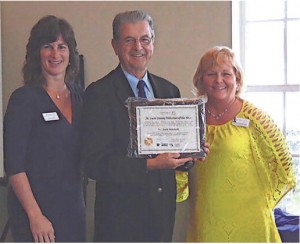
Tracy Levy, SafeSpace director of Development; Dr. Jack Mitchell, St. Lucie Volunteer of the Year; Janet Farnan-Dyer, SafeSpace Resource & Volunteer Coordinator
We are proud to present our St. Lucie County Volunteer of the Year, Dr. Jack Mitchell. Dr. Jack’s contribution as a Board Member and Advocate in the community creates future financial sustainability to help us save and change lives of victims and their families. Thank you Dr. Jack for your endless dedication to SafeSpace and our mission. We appreciate all that you do!!
Why Community Service
A conversation with Dr. Jack Mitchell
Dr. Jack, congratulation on your two new community service awards.
I feel such gratitude, and simply want to give back. I have a strong awareness of how fortunate and how blessed I am in life, an awareness of “why” I am here on earth. Volunteerism simply flows as a result of this gratefulness.
I like the quote by the famous lecturer and writer, Jim Rohm:
“It is the set of the sails, not the direction of the wind that determines which way we will go.”
I draw from this: Know your personal “why” ; set your sail accordingly because the winds of life will challenge all of us; be grateful for your blessings; and be generous with your time, talent and treasure.
The Why is about how you feel – and we are inspired by that which moves us and connects us to other people. Dr. Jack Mitchell shares his why:
As a volunteer, I am impressed with the dedication and love of so many staff employees. They give of their time and talent so very generously to their organizations and the people they serve.
My Why is to help people grow personally and professionally.
I have been blessed with exceptional education, corporate and entrepreneurial experiences. I am passionate to use all these to help people. It feels great to give back.
Communication starts by understanding yourself and then listening to others. How have you used your understanding of Team Strength DISC to help you to be a better volunteer?
The Team Strength DISC profiles and chart, are tools that I can use in every aspect of my life: work, volunteering and personal interactions. I have been involved with this process and system for more than 30 years. Using these tools has helped me to develop the sensitivity to assess and communicate effectively. This was not always the case, years ago, I would make assumptions, mis-read people and miss opportunities.
I still do day, but hopefully nowhere near what I did years ago. What a powerful tool for all of us today. The more you practice, the better you get. Whether in business, in family matters, or in general communication, the Team Strength DISC Profiles are marvelous help to better communication.
Communication is life’s most important skill- better communication make for a better life.
Set your organizations sails by improving the quality of your teams’s communication. Get started now on your Team Strength- call 772-210-4499 or email for more information or to set up and an account.
The Secret to a Strong Team
The Selection Funnel walks decision-makers through the hiring & selection process, enabling them to SAVE TIME and MAKE INFORMED DECISIONS based on concrete data. Selecting employees with this easy step-by-step process ultimately brings reciprocal returns by improving company culture, increasing productive and reducing costly turnover.
- Qualify Resumes
- Screening Assessments
- Telephone Screen
- Selection Assessment
- In-person interview
- Selection Decision
Click here to view the Selection Funnel 6 Steps.
Would you like to identify the best applicants, optimize employee performance, build top performing teams, uncover the source(s) of communicative dysfunction and develop self-aware leaders?
Get started now on your Team Strength- call 772-210-4499 or email for more information or to set up and an account.
Three Steps to Develop a Strong Team
by Dr. Jack Mitchell
I suggest there are three ways for a company to develop and have a strong and successful management/leadership team.
- Continually train and coach incumbents
- Promote from within and implement #1
- Hire qualified talent and implement #1
The real secret in having a strong management/leadership team is to have talented people who have the ability and willingness to do the job.
The concepts of “ability” and “willingness” are critical.
I may have the “ability” to sing an operatic aria. I can hit that high C. However, if I don’t feel like singing, regardless of the “ability”, I am not going to perform.
Also, I may be very “willing” to sing that aria. I know all the words and the notes, but God never gave me a good singing voice. I cannot carry a tune. I am “willing”, but don’t have the “ability”. I am not going to perform.
Therefore, in business, like in most every other endeavor, a person, or a couple, or a team must have both the ability and the willingness to perform, to achieve success.
Today, professionals, who are skilled in recruiting, training and coaching, have some assessment tools that can accurately assess the “ability” and the “willingness” of incumbents and of prospects for a job with amazing accuracy.
To be a successful owner or manger it is critical to recognize where your strengths and expertise serve your company best. Usually, the recruiting process is outside of your expertise and comfort zone. Using sophisticated assessment tools, with the help of a skilled professional, will identify candidates with both the “ability” and “willingness” to exceed in a position.
Using my recommended three step approach outlined above with sophisticated assessment tools will help you develop the talent that truly has the “ability” and “willingness” to make your company or organization even more successful.
Success Story: Selection Funnel
Recently we were engaged to help a client identify and hire a new Controller. This was going to be a new position because the company had grown to a point where a real financial professional was needed to oversee all the financial functions, which were previously handled by the owner and his assistant.
We were able to source over 130 applicants who responded that they were interested in being hired for the position. That’s a huge response!
Think of a funnel.
Our job was to look at all these responses/resumes and bring that number down to the most qualified applicants. Through our skills at reading resumes and knowing the needs of the new position as well as the personalities of the owner and key company executives (through prior personality assessments), we were able to bring the number of applicants to 28 candidates, who on-paper all seemed to have the requisite skills and experience needed to be successful in the new Controller position.
Our next step was to reduce that number to some 15 candidates, again using our professional knowledge and skills in HR and in recruiting.
Now with these 15 candidates we used one of our assessment tools plus a brief meeting with the Owner and two stake-holders to find the brightest of these talented men and women. We identified 4 finalists.
We arranged one on one interviews with the client and two of his key stake-holders. Using the results of these interviews plus another assessment tool, the owner now has two of the very best candidates in the marketplace to select. What a great challenge for the Owner/CEO. He has 2 exceptional financial professionals, who have the “ability” and the “willingness” to excel in this position.
Believe it or not, this process took less than 5 weeks to complete, and at a cost significantly less than expected. The Owner/CEO spent only a limited amount of time meeting the 15 candidates and interviewing the 4 finalists. All the rest of the work was done by us, getting that funnel from over 130 applicants to two finalists.
Our process resulted in the placement of the best candidate with a significant saving in cost and time to the owner.
The real secret in having a strong management/leadership team is to have talented people who have the ability and willingness to do the job. Contact us to learn more about how to hire the very best candidates and develop your Team Strength.
Today, we have the scientific tools and experience to really help business owners succeed.
Being able to measure and understand How and Why someone will behave is vital to indicating the performance of job applicants, optimizing employee performance, building top performing teams, uncovering the source(s) of communicative dysfunction and developing self-aware leaders.
Contact us to learn how to use the right tools to hire the best people to add to the success of your company.
Would you like to build a Success Team?
Contact PPI at 772 210 4499, www.ppidisc.com or email for more information or to set up an account.
Why do you get up and go to work each day?
The perfect companion assessment to pair with DISC, Motivators measures the seven universal dimensions of motivation that exist within each of us. Where as DISC indicates “How” someone will behave, Motivators tells you “Why”. Being able to measure and understand How and Why someone will behave is vital to indicating the performance of job applicants, optimizing employee performance, building top performing teams, uncovering the source(s) of communicative dysfunction and developing self-aware leaders.
Our Motivators assessment measures seven universal dimensions:
THERORECTICAL: Knowledge, Understanding
REGULATORY: Structure, Order, Routine
INDIVIDUALISTIC: Independence, Uniqueness
ALTRUISTIC: Service, Helping Others
AESTHETIC: Form, Beauty, Balance
ECONOMIC: Practical Results, Money, ROI
POLITICAL: Control, Power, Influence
Would you like to identify the best applicants, optimize employee performance, build top performing teams, uncover the source(s) of communicative dysfunction and develop self-aware leaders?
Get started now on your Team Strength- call 772-210-4499 or email for more information or to set up and an account.
Click here to view the Seven Universal Dimensions.
Vital Tool: Being able to measure and understand How and Why someone will behave.
In my career, I have experienced very different work “cultures”:
In one company”culture”, education was not highly regarded. I was informed not to use my “doctoral title” because it might embarrass fellow employees and the company’s customers. In another company, they insisted I use my professional title, because they thought it would impress the customer base. In a third company, everyone was called by their first name, including the CEO. The “culture” established was one of informality and there was a desire to have a casual and “creative” work environment. There was no written policy about this, it simply was the way people communicated, including the CEO and entire leadership team.
Consider the “culture” of most financial services companies compared to the “culture” of most advertising agencies. There are no written rules about the different “cultures”. They have simply developed over time based on mostly non-verbal behaviors of those in leadership roles
With this understanding in hand, consider the challenges involved in hiring the correct person for a job. To be successful in placing the right candidate in the correct position a hiring manager must look not only for the technical skills of the candidate, but also the personality style and the culture in which the new hire will work.
If a candidate scores highly, for example on the Regulatory motivator, which means they do well in a structured, orderly environment, and your company’s “culture” is very entrepreneurial, shooting from the hip, with little to no formal policies or procedures, this person, though highly skilled, will more than likely not succeed, and will either voluntarily or non-voluntarily leave the company.
Hiring correctly demands much wisdom and skill. Limiting hiring decisions based on looking only at the technical skills of a candidate and perhaps their longevity in a job is often reflected in the company’s turnover rates. The cost of turnover and many times the hidden costs of having the wrong person in the wrong job, and even in the wrong company, can be significant.
Are your hiring managers using the right tools to hire the best people to add to the success of your company?
After making sure a candidate has the requisite technical skills and proper work experience, then the real work of successful hiring begins. Building a hiring tool box using various assessment tools to assure hiring the best person possible.
DISC Personality assessment
Motivators assessment
Cognitive assessment
Emotional IQ assessment
Nothing can “guarantee” hiring the ideal person for the job within your company. However, using all the correct tools can certainly reduce the chance of hiring the wrong person-saving time and money.
Are you optimizing your greatest resource?
The emergence of .com job-search resources has helped create a fluid workforce capable of constantly searching for that next perfect opportunity. According to the International Management Association, average churn rates have jumped by more than 14 percent in just the last decade– and that number continues to climb. Employers can combat this trend– while saving both time and money– enlisting online assessments to accurately pre-qualify new job applicants.
Simply put, quality, science-supported online assessments can ensure that a company minimizes employee related expenses while optimizing its greatest potential resource– human performance.
Want to improve your hiring numbers and reduce the cost? Get started now on your Team Strength- call 772-210-4499 or email for more information or to set up and an account.
Click here to view Hiring and Selection Data and source information.
Optimizing your business’s greatest potential resource– human performance.
A success story by Dr. Jack Mitchell
Mike K was spending thousands and thousands of dollars in his Call- Center business due to turnover. It seemed that as soon as he hired someone, someone else left. The cost of recruiting, spending time reading resumes, interviewing, plus the loss of someone actually “in the seat” making calls was costing him a small fortune.
After a consultation with Mike, together we put into place a custom process using assessments and our Team Strength Chart. These tools helped Mike to identify the “ideal” Profile for him to use when hiring. The next step in the process was to train his managers and supervisors how best to supervise their staff.
The Call-center business usually requires someone who can do repetitive work day in and day out. It takes a special personality to perform in such a manner. With the new custom assessment program, Mike and his team were able to stop the turnover rate caused by hiring people who needed a different type of job. Now they can identity the correct applicants, minimizing employee related expenses while optimizing the company’s greatest potential resource– human performance.
Mike’s new plan included the next critical step of training management personnel. Getting the most out of these types of associates requires a different management style than other types of personality styles. (In our language, for example, managing a High S is quite different from managing a Low S.) This plan puts in place the most effective training customized to the correct audience.
Mike’s turnover cost significantly decreased, and his bottom-line significantly improved having the right people in the right job with the right management style being employed.
“Working with PPI and their Team Strength Chart and assessment tools have definitely helped me understand the value of personality assessments, and know how best to manage different personality styles within my company.”
Thank you
Mike K. West Palm Beach, Fl
Today, we have the scientific tools and experience to really help business owners succeed.
Contact us to learn how you can minimizes employee related expenses while optimizing your company’s greatest potential resource.
If you are having any turnover issue, contact PPI at 772 210 4499, www.ppidisc.com or email for more information or to set up an account.
Tribal Leadership
Today I read a summary of the book Tribal Leadership by Dave Logan.
What would your life be like if you could come to work every day and worked on something that lit a fire in your heart? What if everybody you worked with had the same desire and passion as you? What if the work you did, day in and day out, had an impact not only in your workplace, but left a proverbial dent in the universe?
A tribe is nothing new, every organization has tribes. Logan explores how a tribe is at a specific level based on how the people in the tribe interact with one another. There are 5 stages of tribes.
Which stage is your tribe at?
Stage 1 Tribes, which account for 2% of the world’s corporate tribes, is a group of people who think that “life sucks”.
Stage 2 Tribes, which account for 25% of the world’s corporate tribes, is a group of people who think that “my life sucks”, and in particular, because I have to be at work with you idiots.
Stage 3 Tribes, which account for 49% of the world’s corporate tribes, is a group of people who walk around thinking – and sometimes saying – “I’m great”. These people and tribes have a lot of energy, but none of it being directed to a common goal.
Stage 4 Tribes, which account 22% of the world’s corporate tribes, is a group of people united by the language like “We are great, and they are not”.
Stage 5 Lastly, stage 5 tribes, which account for 2% of the world’s corporate tribes, is a group of people united by a vision of changing the world, where there is no talk of competition, only of changing the world.
The first step, as the authors notes, is always to understand which stage your tribe is in, because their experience shows that you’ll only be successful by moving up the ladder one stage at a time.
If you want know more, you can read a summary of this book here today (you’ll need to create a free account first): https://readitfor.me/timothy-kinane
Which stage would you like your tribe to be at?
Call 772-210-4499 or email to set up a time to talk about tools and strategies to lead your tribe.


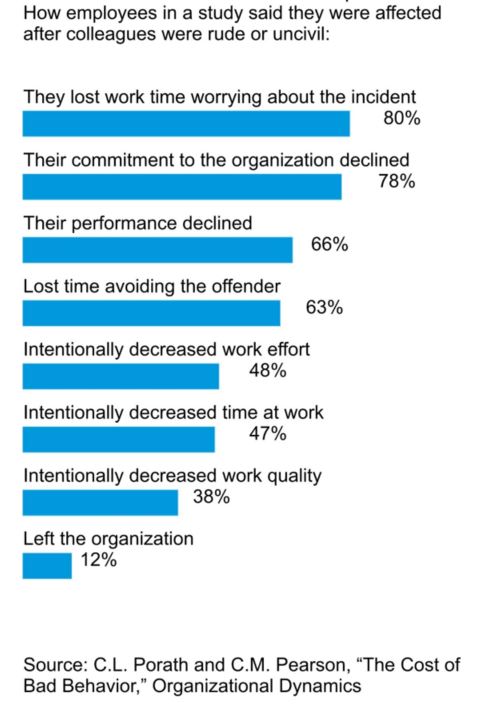


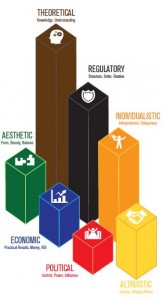
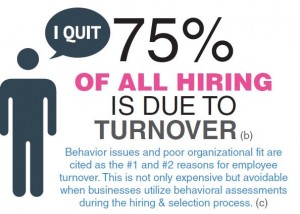
 Tim is a Consultant to Business, Government and Not-for-Profits Organizations specializing in innovative and challenging ways for organizations to survive, to thrive and to build their teams.
Tim is a Consultant to Business, Government and Not-for-Profits Organizations specializing in innovative and challenging ways for organizations to survive, to thrive and to build their teams.